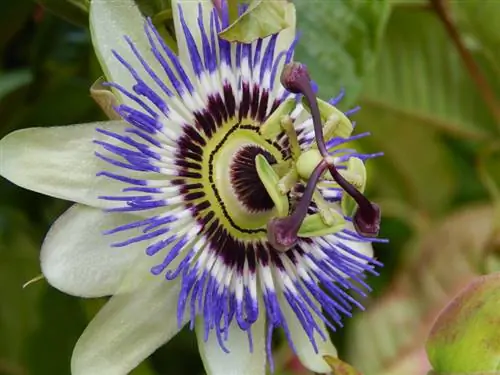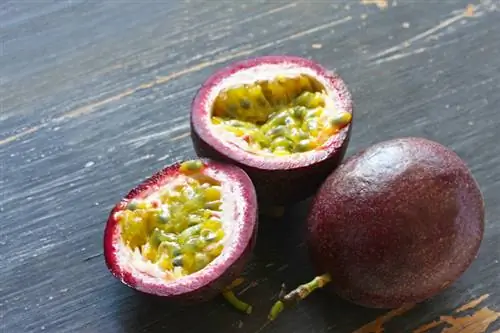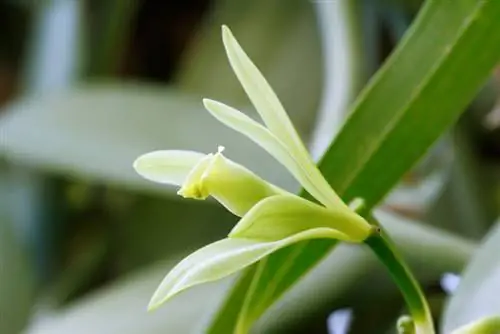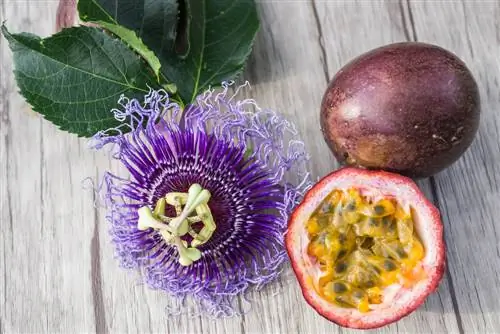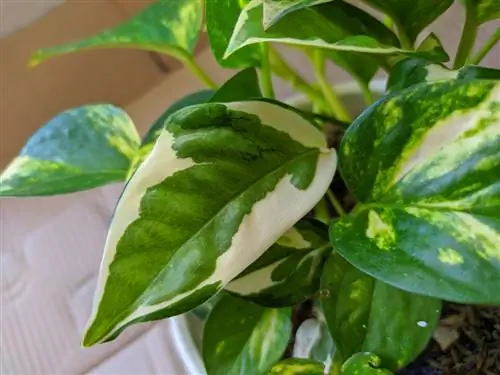- Author admin [email protected].
- Public 2023-12-16 16:46.
- Last modified 2025-01-23 11:20.
Growing passion fruit in your own garden or winter garden is not only worthwhile because of the delicious fruits. The particularly magnificent flowers of the passion fruit are also well worth the effort involved in growing them.
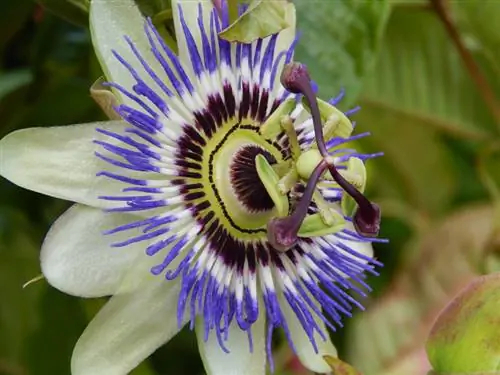
What is special about the passion fruit flower?
The passion fruit blossom is characterized by its special splendor and diversity. It is present in more than 530 species, most of which come from South America. The symbolic flower can also be planted in local gardens, e.g. B. as blue passionflower (Passiflora caerulea).
Variety of flowers
Most of the over 530 known species of passionflower have their origin in South America, but other areas of origin are also in:
- North America
- Australia
- Oceania
- Asia
While North American varieties have a certain degree of frost resistance, other types of passion fruit and especially passion fruit can only be cultivated in this country as container plants. Growing different varieties is worthwhile because of the variants of the large, round flowers.
The eponymous symbolism of the passion flower
The passion flower got its German-language name from missionaries who claimed to have recognized numerous symbols of Christ's passion in its flowers. According to these Jesuits, the five petals and sepals each symbolize the ten apostles present at the crucifixion and the aureole symbolizes Jesus' crown of thorns. While the three styles are said to represent the crucifixion nails, the five anthers are associated with the stigmata of Christ.
Tips & Tricks
The best-known visually is the blue passion flower of the genus Passiflora caerulea, although the imported passion fruits mostly come from plants of the Passiflora edulis.

